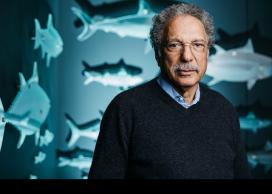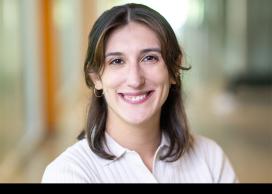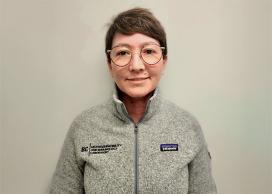Research in focus: Daniel Pauly
Learn more about the work of our researchers at UBC

May 20, 2025
Name:
Daniel Pauly
My pronouns:
He/him
Title:
Killam Professor & Principal Investigator of the Sea Around Us
Faculty/Department/Unit:
Sea Around Us | Institute for the Oceans and Fisheries
Location:
Vancouver
Year I started working at UBC:
1994
Provide an overview of your research in 75 words or less:
Identifying global fisheries trends to provide a more accurate account of how much fish we are extracting from our oceans, how much is left and the impacts of fisheries on marine ecosystems; and Gill Oxygen Limitation Theory, which explains how, as global temperatures increase, fish (who breathe via two-dimensional gills) need to use the little oxygen they get from water to maintain body functions, which forces them to spawn and stop growing at smaller sizes.
What first motivated you (or motivates you) to conduct your research?
In 1997, researchers trying to address the idea of ‘ocean health’ complained about the ‘lack of data.’ I argued against this perceived data scarcity, as we had FAO's fisheries statistics available since 1950 and mentioned that ocean health could be described as a strong departure from a reconstructed pristine state. This led to launching the Sea Around Us. By reconstructing marine fisheries catches, we have uncovered trends like overfishing and underreported small-scale catches.
What do you hope will change as a result of this research?
Through catch reconstruction work, the goal is to redefine sustainable fishing to prioritize marine conservation, climate adaptation, and the well-being of vulnerable communities over corporate interests. The Gill Oxygen Limitation Theory is meant to bring attention to the impacts of climate change on water-breathing animals, particularly fish, because the decline of their body sizes (one of the major effects of water warming) has consequences for entire populations, and thus the productivity of commercial fish stocks.
Describe any interesting research milestones you are approaching
In 2010 and with the support of about 400 collaborators, the Sea Around Us completed the first reconstruction of the marine catches of all countries. In subsequent years, these reconstructions were updated and presented as time series of catches on www.seaaroundus.org. Now, we doing a detailed update and revision of the reconstructions, also involving hundreds of in-country collaborators, with the intention to provide even more accurate information, reveal unreported fishing, and analyze emerging trends.
- Our people
- Research
- Research in focus






